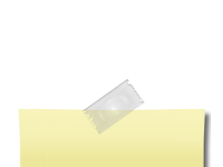
- Home Page
- NEW PHOTOS & COMMENTS
- Virtual Coffee
- CLASS PICTURE
- A Special Hello !
- First Time Visitors
- Classmate Profiles
- In Memory
- PHOTO GALLERY
- Classmates Art Entertain Lit
- SCRAPBOOK
- About U High
- History/Videos 1967
- CAMPUS
- DINKYTOWN
- PROSPECT PARK
- WEST BANK
- BISBILA YEARBOOKS
- Memorabilia
- Breeze Articles
- Oct 21, 1912 Dear Diary
- UHS Veteran
- '62 Wrestling Lee Peterson
- '62 7th grade date Tony Muir
- '62 C Squad Chosen
- '62 English Grant 250,000
- '62 Ski vacations
- Ski Trip Trollhaugen
- '63 Merger possibly
- '63 Kris Holmgren playwright
- '63 Diane Gilchrist model
- '63 Mothers Tea
- '63 Locks..2nd flr bathroom
- '63 Charity Week -Winners !
- '63 New dress code
- '63 Girls win All Star Buckets
- '63 Soc Studies Grant $223,
- '63 Charity Week -royalty
- '63 Jr High Play
- '63 Keys to Baldplate Jr Hi
- 63 Girls beat Northrup F-hoc
- '63 Our lockers...!
- '64 New titles for library
- '64 UHS football field ?
- '63 Style Show - Diane G
- '63 Thirty mile hike
- '63 ode to dying school
- '64 Johnson or Goldwater ?
- '64 Class officers
- '64 Mock Election
- 64 Homecoming worthwhile?
- '64-65 Senators elected
- '65 Glue-sniffing - Necking...
- '64 Penguin adoption
- '64 New Ski Club Organized
- '64 Shevlin vs Dinkytown
- '64 Ski Club plans trips
- '64 Artic coup
- '64 Peik Castle
- Wrestling rules by Linda Hart
- '65 UES Closing
- '65 Sad news - UES
- '65 Ozgood -Student teacher
- '65 Girls swimming
- ' 65 Girls sports
- '65 Edith Nyquist
- '65 U Club Initiation
- '65 Trackmen 4th -
- '65 Srs toppled in Math Jim L
- '65 Home Ec - Childcare unit
- 65 Mermaids/ No more GRA
- 65 Go to college learn to riot
- '65 'Crucible'
- '65 AFS choses finalists
- '65 Ski club trip plans
- 65 Wrestling expectation
- '65 Whoosamaka ?
- '65 Drexler takes over
- '65 Viet Nam
- 65 Kathe Schnoes AFS
- '65 Conformity
- '65 Mexico Trip
- 65 Senate Action Committee
- '66 Rm 165 TV Studio
- '66 Student Teacher '62 grad
- '66 Student uniforms?
- 66 Viet Nam 2 books 2 sides
- '66 Boys Girls State JB-AL
- 66 Kathe Brazil Letters
- '66 A Squad Cheerleaders
- '66 Clausen to watch in mile
- '66 Snow Day
- '66 Senate Voting guide
- '66 Double Play
- '66 Clothing code
- '66 Jim Lin Apathy Congress
- '66 Pom Poms new routines
- '66 Prom - break tradition
- '66 Feb 27 UHS in Star Trib
- '66 Biz Staff Chosen
- '66 Jim Lin Bard Editor
- '66 Self instructional Science
- BREEZE ARTICLES 1967
- '67 "Red" St Paul Bus Driver
- '67 Pitzel to the North Pole
- '67 Edrina,Eduardo-sports
- '67 Jim Lin letter to editor
- '67 Apathy Letter to Editor
- 67 Charity Ball Ann Marie Liz
- '67 Bruce Hastie takes 2nd !
- '67 Sub cultural differences
- '67 National Honor Society
- '67 Mr Yore Physics / Sports
- '67 Lefties aren't right
- '67 Jim Lin Math 3rd time
- '67 Hastie brightens season
- '67 Track ailments
- '67 Beard policy
- '67 Letters to Editor
- '67 Teachers Wedding Babies
- '67 Track - Clausen, Kufus
- '67 Scholastic Achievement
- '67 Faculty Ousted
- 67 Mr Pitzel back from North
- '67 Student Govn'ment Day
- '67 Farewell Open House
- '67 Never forget Edrina
- '67 Srs Farewell Skit
- '67 - 15 Seniors lettered
- '67 Sr plans for college
- '67 Would you Believe... 1
- '67 Would you believe ...2
- '67 Would you believe...3
- '67 Would you believe...4
- '67 Would you believe... 5
- '67 Would you believe...6
- '67 Would you believe...7
- '68 Pitzel success North Pole
- '68 No AFS Abroad this year
- Missing Classmates
- Contact Us

This section of the web site requires you to log in.
If you've forgotten your password, click here to reset it. Contact us if you're having trouble.
If you've forgotten your password, click here to reset it. Contact us if you're having trouble.
Powered by Class Creator